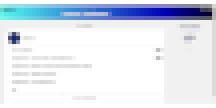Although digital technologies hold great promise in the realm of education, access remains limited for many communities worldwide. Endless Network, a global organization committed to addressing equity gaps stemming from challenges such as inadequate internet access, strategically directs investments towards international companies that share their mission and actively contribute to its realization.
One such company, Information Equity Initiative (IEI), is working to bridge the digital divide so that all students have access to educational information. Erik Langner and his ingenious team at the non-profit IEI have unearthed a game-changing solution — and it's been sitting right under our noses for years.
From sharing Sesame Street to sharing e-books, datacasting (sharing targeted content through digital television signals) is set to help deliver digital education content to millions of students worldwide. And it's starting with U.S. schools and incarceration facilities in North and South Carolina, Pennsylvania and Virginia.
Inexpensive, reliable and boasting a colossal bandwidth for seamless file sharing, television stations previously used datacasting to send emergency communications to homes across the United States. When combined with state-of-the-art cloud technology, it is also a secure, effective way to share customized digital content with students.
Spurred to help by the monumental education access issues created during the pandemic, several local PBS broadcasting stations collaborated to allow local schools and even individual teachers to use existing digital television signals to send educational materials to students with little or no internet access at home.
The Information Equity Initiative was born, and Langner — with over 20 years of experience working with PBS and NPR stations, non-profits and public benefit corporations — was the natural choice for co-founder and CEO.
EdSurge chatted with Langner to unravel the potential of this time-tested yet underrated technology. We asked where it fits in the journey toward universal broadband. And, most importantly, how does it serve students?
EdSurge: How did the Information Equity Initiative come to be?
Langner: Really, it was born from desperation. During the pandemic, 25 percent of U.S. households didn't have broadband access. So, three PBS member stations came together, recognizing they could use their television spectrum to directly serve kids on the other side of the digital divide. Over the next three years, we worked with educators to design and integrate the system to work with learning management systems like Google Classroom, Schoolology and Canvas.
The pandemic has subsided, but a huge number of kids are still unable to access content so they can review and be prepared for the next day of class. Now, we're ready to help teachers seamlessly create lesson plans and send them out to all students — even those who don't have broadband. And the best part is nothing changes for the teacher.

"Nothing changes." Can you explain that? How does datacasting work?
In the United States, PBS member stations reach 97 percent of all households. So, we already have infrastructure that has nearly ubiquitous coverage. We use these digital television signals, which have always been able to carry data. But until IEI, the only data typically sent was emergency communications. We realized that if we could send emergency communications, we could also send an ebook, a PDF or an educational video for a second grader.
So now, we use a portion of the television spectrum to send data packets to students’ homes. Here's how it works: The teacher chooses their own content or content available in our system and sends it to any student covered by their local PBS station. Each station generally covers around 8,000 square miles. Students have a special inexpensive receiver called an Eddie that sits in their home, connected to a window-mounted antenna. The Eddie, which is generally subsidized by schools or Departments of Education, costs a little over $100 and has a lifespan of 5-10 years, receives the data and acts as a hotspot so any Wi-Fi-enabled device, like a laptop, tablet or mobile phone, can connect and access the content without the internet.
Unlike television programming that is available at a specific time for viewing, the teacher-generated data packets are stored locally on the devices so students can access them whenever they are ready to study and learn, even without an internet connection. Up to eight people in a home can use the Eddie. More powerful versions called Edwards are available for school buildings and incarceration facilities and can serve thousands concurrently.
Where does datacasting fit on the road to universal broadband?
While we would love for everyone to have access to high-speed, affordable broadband, that's many years out for many people. And even once the last mile is connected, then the question of affordability remains. Will the government continue to subsidize the monthly cost or not?
What we're providing isn't a substitute for the internet. Instead, it allows a nearly unlimited amount of curated content to get to students' homes virtually anywhere in the world today at an extremely modest cost.
What kinds of content can teachers share with students?
We specifically designed our platform to allow teachers to curate content at the local level. So teachers (or their school districts) always make the call on what they want to send out.
The teacher logs into the platform, and we've already structured their classes and added students. We don't collect any personal data. We just need to correlate an individual with an Eddie device number so the content goes to the right home. The teacher can either work through our learning management system, which has content from Sesame Workshop, PBS member stations and soon other libraries, like Khan Academy, or through Google Classroom, Schoology and Canvas and create the lesson plan. And when they hit send, we're integrated in the background.
So if they work in Google Classroom, they won't even know we're there. We will package all of that content, whether it's an ebook or an educational video, along with the notes from the lesson plan and send it where it needs to go. Datacasting is built to send huge files like videos, so even large files are a piece of cake.

Where is IEI going next, and how can schools learn more?
We initially thought it would be a domestic K-12 service, but we're finding this massive proliferation of use cases that go well beyond K-12 and the United States. For example, we're working in incarceration facilities to provide educational, workforce upskilling, re-entry and therapeutic content; delivering educational and SEL content to early childhood centers; and working with federally qualified health centers and [non-governmental organizations] NGOs to focus on public and maternal health. As we are interoperable in over 80 percent of the world’s countries, we are now starting to engage with foreign governments to connect schools where the internet either doesn’t exist or is too expensive. And because the students in these settings often lack access to personal devices, we’re pairing our Eddie with a projector so that we can serve the greatest number of students as cost-effectively as possible. We're still in the early stages of deployment, so we don't have a lot of outcomes and results yet. But, we plan to measure the success and impact of IEI on student learning and engagement. We're also working to raise awareness among public television stations and educators about this new technology and service.



